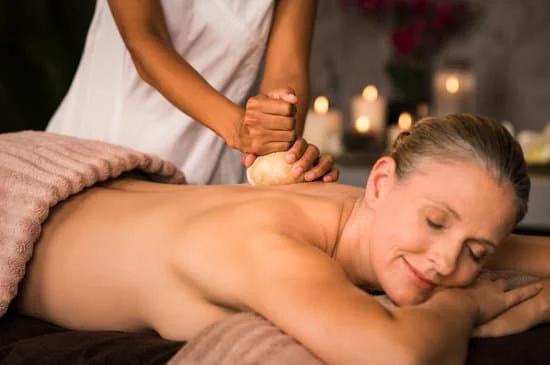Preparation and Post-Treatment Care in Panchakarma
Panchakarma , a cornerstone of Ayurvedic medicine, is renowned for its profound detoxification and rejuvenation effects. Derived from ancient Sanskrit, "Pancha" means five and "Karma" means actions, representing the five therapeutic procedures designed to cleanse the body of toxins and restore balance. For optimal outcomes, understanding the preparation and post-treatment care is crucial. This article delves into the essential steps and practices surrounding preparation and post-treatment care in Panchakarma, highlighting their significance for a successful detox experience.
**Preparation for Panchakarma**
The preparation phase is integral to the efficacy of Panchakarma in Ayurveda . Proper preparation ensures that the body is ready to undergo the detoxification process, thereby maximizing the benefits and minimizing potential discomfort. Here are the key aspects of preparation:
1. **Pre-Treatment Consultation and Assessment**
Before beginning Panchakarma, a thorough consultation with an Ayurvedic practitioner is essential. This initial assessment involves evaluating the individual's dosha (body constitution), current health status, and specific health concerns. Based on this evaluation, the practitioner designs a personalized Panchakarma regimen tailored to the individual's needs.
2. **Pre-Treatment Diet and Lifestyle Adjustments**
To prepare the body for the detoxification process, certain dietary and lifestyle changes are recommended. This typically involves a shift to a Sattvic (pure and balanced) diet that includes easily digestible foods. Foods that are light, warm, and devoid of heavy, oily, or spicy ingredients are preferred. Additionally, avoiding stimulants like caffeine and alcohol helps in easing the body into the detox phase.
3. **Pre-Treatment Herbal Preparations**
Herbal preparations play a vital role in Panchakarma preparation. Specific Ayurvedic herbs and formulations are administered to help the body build up strength and improve digestion. These herbal treatments, often given in the form of teas or capsules, assist in loosening and mobilizing toxins accumulated in the body.
4. **Pre-Treatment Therapies**
Prior to the main Panchakarma procedures, preparatory therapies known as Purvakarma are employed. These therapies include:
- **Snehana (Oleation)**: Application of medicated oils either externally or internally to lubricate the tissues and facilitate toxin release.
- **Swedana (Fomentation)**: Use of steam or other forms of heat to induce sweating, thereby loosening toxins and preparing the body for deeper cleansing.
**Post-Treatment Care in Panchakarma**
The post-treatment phase is equally vital as the preparation, as it helps the body integrate and maintain the benefits of the Panchakarma procedures. Effective post-treatment care ensures the body's smooth transition back to normalcy and supports sustained health improvements.
1. **Post-Treatment Diet and Lifestyle Recommendations**
After completing the Panchakarma procedures, adhering to a specific diet is essential. The post-treatment diet, often referred to as the "Pathya" diet, focuses on nourishing and easily digestible foods that help in restoring energy and supporting the body's healing process. Meals are usually light, warm, and prepared with easily digestible ingredients. It is also recommended to avoid heavy, spicy, or cold foods, as well as to continue abstaining from stimulants.
2. **Gentle Reintroduction to Regular Activities**
Gradual reintroduction to regular activities is advised to prevent overwhelming the body. While it’s essential to return to normal routines, it is equally important to avoid excessive physical exertion or stressful activities immediately after treatment. Instead, gentle exercises like walking or yoga can be beneficial in maintaining the benefits of Panchakarma.
3. **Continued Herbal and Ayurvedic Support**
To support the body's ongoing healing process, continuing the use of specific Ayurvedic herbs or supplements may be recommended. These can help in further detoxification, enhancing immunity, and balancing the doshas. The Ayurvedic practitioner might suggest a tailored regimen based on individual needs.
4. **Mindfulness and Stress Management**
Panchakarma's benefits are significantly enhanced by incorporating mindfulness practices and stress management techniques. Meditation, deep breathing exercises, and adequate rest are essential for maintaining mental and emotional balance, which in turn supports physical health.
5. **Regular Follow-Up Consultations**
Regular follow-up visits with the Ayurvedic practitioner help in monitoring progress and addressing any post-treatment concerns. These consultations provide an opportunity to assess the effectiveness of the Panchakarma regimen, make necessary adjustments, and receive ongoing guidance for maintaining health.
Conclusion
Panchakarma in Ayurveda offers a profound approach to detoxification and rejuvenation, but its success relies heavily on proper preparation and post-treatment care. By adhering to the recommended dietary, lifestyle, and therapeutic practices before and after treatment, individuals can enhance the effectiveness of Panchakarma, achieve optimal health benefits, and foster long-term well-being. Embracing these essential steps ensures that the journey through Panchakarma is not only transformative but also sustainable, paving the way for a healthier and balanced life.

Comments
Post a Comment